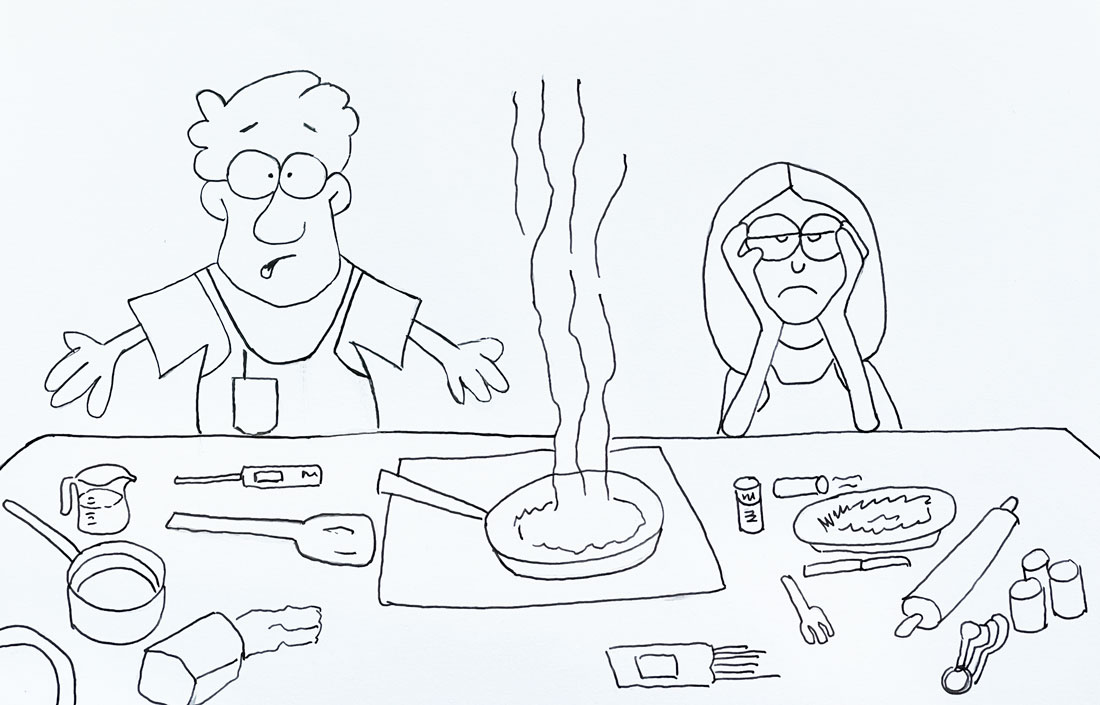The Desperate Sous-chef
Cartoon and Photos by Forrest Anderson
What happens when a helpful man who has no particular interest in cooking marries an adventuresome but accident-prone California foodie with Mediterranean DNA?
Enter the Desperate Sous-chef.
This is the story of my husband Forrest Anderson’s culinary journey to becoming a skilled sous-chef who assists me with regular meals, entertaining and creating dozens of dishes used for taste testing and food photography for cookbooks and food apps. I sat down with Forrest to ask him how he ended up with a skill in which he initially had no interest.
Q: What is your culinary background?
A: I grew up in a pretty relaxed culinary environment. It was Pop Tarts or instant breakfasts for breakfast, school lunches for lunch and every kid for himself after school (think Saltine crackers). We had meat and potatoes for dinner.
There wasn’t much in the way of ethnic food. The most adventuresome thing we had was TV dinners occasionally. The first time I had a taco was at a drive-in a small Utah town.
I went to Greece after high school, and I thought, “There is nothing here to eat.” It wasn’t possible to find something there to eat that I was familiar with.
Then I went to Taiwan, which blew my mind. The first thing I remember in Taiwan was going to the market and seeing everything in its raw form – fresh vegetables, fresh fruit, meat hanging there. Everything was at the most basic level – out of the ground, off the animal.
I would sit down at a table and the only thing I recognized on the table was the rice, but I learned to enjoy it. The flavors were rich and everything was fresh. It was all freshly bought, freshly cut, freshly cooked. My uninitiated tongue got an incredible introduction to international cuisine. The variety was an amazing experience. I opened my mind and it opened my mouth to the possibilities of food.
Even so, with all that exposure, I had no clue about or particular interest in cooking.
Q: How did that change?
A: When my wife got badly hurt in an accident, there was nobody standing behind me to get food on the table, so I had to take the whole food thing more seriously. I got much more involved in the process of preparing food, first by myself and then, as she regained her health, continuing to take on some of the food preparation.
I started making rice pudding for breakfast. Then we went to Japan and they had this really yummy yogurt in cute little jars, and we went on a quest to find the jars. We found the jars and we got a Dash yogurt maker. After that, I began a quest to perfect the recipe because you had to figure out the temperature, the length of time, the right yogurt starter. Even figuring that out, there were inconsistencies. It took quite a while to get it to a stage where it was acceptable. Now, I think we’ve got there. I make yogurt about every five-six days.
As my wife recovered, I wanted to ease her burden with the cooking process, and it evolved into preparing some of the side dishes. We really like Din Tai Fung restaurant food, but we didn’t live close to their restaurants so I started making copy cat Din Tai Fung green bean and cucumber recipes. The green beans have become the top of the list for all family holidays. We even have them for Thanksgiving and Christmas.
Q: How did you acquire more professional sous-chef chops?
A: My wife is a writer and designer who has always enjoyed cooking and baking and I’m a photographer and app developer, so that evolved into us working together on cookbooks and companion cookbook apps. Creating a cookbook or food app requires a lot of preparing and testing of recipes and doing food photo shoots, so I got involved in not just the photos but food preparation.
Q: How did gardening influence your sous-chef career?
A: We grew so many cucumbers and peppers that we had to come up with a way to preserve them. It was mostly the cucumbers that threw us into the pickle jar. We really got into canning. My job is prepping the jars, heating the water, closing the jars, making sure the boil time is right and checking them after to make sure they have sealed properly.
Q: What’s the worst thing about being a sous-chef?
A: The worst thing is not knowing the correct principles of what you are tasked with. I’ve learned that you don’t always stir stir fry – sometimes you let it sit. You stir sauce so it doesn’t get lumps.
Sometimes, instructions that the chef gives me just don’t stick. I have a non-stick brain. The recipes I do make I have in my phone so I have ready access to them. The number one thing for being a good sous-chef is paying attention. You really have to listen to what the chef says because the needs change. Even when you’re cooking something you’ve had before, the tasks can vary.
You are cooking things simultaneously, so you have to be able to jump between tasks.
Q: Do you have an interest in moving up to chef?
A: My personal interest doesn’t go beyond being a sous-chef. Despite all the exposure to amazing food, I still have a standard issue palette. I don’t have an adventurous one at all. That precludes any hopes of ever becoming a chef. There’s no foundation there for it.
I have my boundaries. Part of it is that I’ve had enough bad experiences with adventuresome food that I don’t want to go there. I got sick once from eating turtle soup and had to go to the hospital and have an IV.
When I get hungry, I have a hunger for basics – milk, cereal. The thing I do like is learning how to do the basics well. I spent months tweaking our yogurt recipe until it’s creamy smooth and really tasty, for example. I use a thermometer a lot in the kitchen to get temperatures just right. The precision and results are tightly connected and that’s what I enjoy. I like figuring out the perfect combination of ingredients, temperature and time.
Q: What is your main motivation for continuing to cook?
A: My main motivation for being involved still grows out of – you have to eat, right? That’s a necessity and I feel like I need to contribute to that. I don’t like the idea of my wife having to do everything. I have a sense of responsibility – I can’t just sit down on the couch while she is cooking. The key is being useful, but I don’t have any sense of direction in the kitchen.
And I’ve kind of gotten attached. When I find something I really like, I want to make sure that it’s there - like the rice pudding and yogurt. I do them one to two times a week. It’s a routine, like phases of the moon.
Now that I’ve figured out how to do some side dishes and they taste good, there’s public incentive to give my audience what they want.
Q: What else do you do as a sous-chef?
A: I make the noodles.
I clean up. It’s my job to keep the counters clean and keep the dishwasher going, but not be so anxious that I take the measuring utensils away before the chef is done with them.
I make pie crust. I have a great pie crust recipe. It’s fool proof. It works every single time. Part of it is that my larger size and hands mean I can roll out pie crust consistently.
Q: How about grilling?
A: That’s a challenge. The key with grilling is a meat thermometer. You sear the meat well, and you make sure you get the right inner temperature and seal the moisture and that makes for a winning meat preparation.
I kind of scoffed at the barbecue team. If I had gotten an apron, grilling utensils and a grill for Father’s Day, I would have been offended. I’m not a backyard barbecue kind of guy. It’s not a passion. I see it as my job to do the grilling. Somewhere along the line, the cave man gene fell off the chain. I can’t see myself as the kind of guy that would go out for the kill and come back and put it on the spit.
Q: Why the Desperate Sous-chef title?
A: Cooking is not a natural inclination, so the desperation came out of trying to meet the needs and overcoming my natural limitations. I’m not inclined to be a chef, but I am inclined to be helpful. Being married to a foodie put being helpful on hyperdrive.
My first thought is to go with something simple for food, but it generally takes as much effort to make something simple as to make something decent. So I am constantly fighting the gravity of my own inclinations. My idea of a salad, if we are going to have a salad, is lettuce with grated carrots on it. There’s no sense of adventure. When my wife makes a salad, there are a lot more things in a salad than I would ever dream of and it makes for a good tasty salad.
The other part is I had to learn to be helpful enough when the chef needs it, but stay out of the way when she doesn’t.
Q: What are your tips for being a sous-chef?
A: Don’t be in a hurry. You have to take the time it takes to get it right.
When you find something successful and it really works, capture the process so you can use it again and again. Because if you don’t follow a recipe, you’re toast and probably what you’ll have for dinner is toast.
Have a routine. Yogurt takes 12 hours to cook. You have to do it first thing in the morning or at night and then bottle it at night or first thing in the morning. If you cook yogurt too long, it separates. If you don’t cook it long enough, it doesn’t ferment, so you have to allow enough time to do it right.
If you let rice sit too long, it won’t absorb a custard mix for rice pudding. You have to practice to determine the best process.
Q: What about tools?
A: Have good basic utensils – you don’t need a bunch of fancy stuff. The fanciest thing we have is a food processor. You don’t need expensive tools. You just need them to be consistent. I just order them on Amazon. You can buy a $200 rice cooker, but ours cost $15-$20 and it works fine.
Q: What about the kitchen?
A: We have a kitchen that can be cleaned up quickly. The design of a kitchen can make or break a chef. You need more than one surface. When the smoke clears and you have to clean up the battlefield, you know it’s not going to take you forever if the kitchen is easy to clean.
Q: How do you deal with your food preferences that are different from the chef's?
A: My basic gene pool is full of milk. It’s Scandavian dairy farmer, and my ancestors weren’t close enough to the ocean to pick up the love of fish, so my taste runs heavily toward milk products.
My wife is 100 percent Mediterranean in terms of her inclinations, and she sees the Mediterranean as shaped like a mouth. The closest thing to Mediterranean that I’m inclined to pursue is pizza, as long as it has enough cheese on it.
Cooking is like politics. It requires compromise to have success. I’m inclined to undercook things vs. her overcooking them. One-party rule or tyranny either way is doomed to failure.
Ultimately, cooking is a science and precision is a key ingredient in that. If you aren’t precise, things won’t work out. My wife supplies the art and direction and I provide the precision.
Q: Do you like being a sous-chef?
A: I actually enjoy it. By persisting and overcoming my reluctance, it’s become a pretty enjoyable part of every day. There’s a definite sense of satisfaction in doing it. The no. 1 thing for me is the joy of doing it together. It’s very rewarding when you sit down and have a sandwich that has pickles that you bottled earlier in the year and enjoy that richness of the flavor and how much it adds to the meal. I enjoy every bottle of yogurt. It definitely pays. I don’t have a single day of regret in my career as a sous-chef.
We both bring our skills to the kitchen. My wife is a foodie and I’m an engineer type and those different skills work together. The key is learning to coordinate with each other and divide up the tasks based on those skills.
Here are some of Forrest’s best recipes:
Rice Pudding
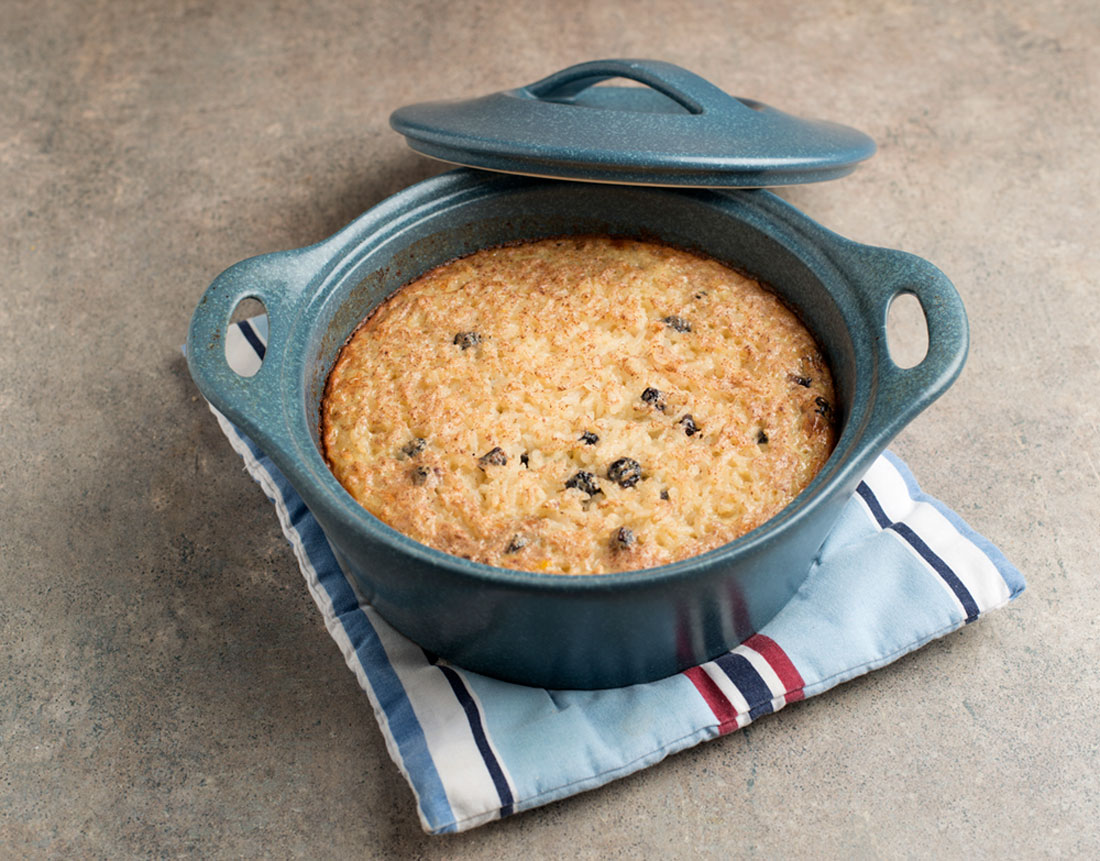
INGREDIENTS
2 cups of cooked rice (Cook in a rice cooker with 2.5 cups of water)
2 eggs
1/3 cup sugar
¼ tsp. cinnamon, plus more for topping
1/8 tsp. nutmeg
1 tsp. vanilla
1 ½ cups milk
¼ cup raisins
DIRECTIONS
Preheat oven to 375 degrees F. Mix all ingredients thoroughly and spoon into a ceramic baking dish. Sprinkle more cinnamon on the top. Bake for 48 minutes in a ceramic baking dish with the lid off. Remove from the oven. Place the lid on the pot and cool it. This will keep in the refrigerator for three or four days, so you can heat some in the microwave and have it with milk for breakfast every day.
Ranch Dressing

INGREDIENTS
1 cup mayonnaise
½ cup coconut milk, canned (shake the can well before opeing it)
3 tbsp. dried parsley (you also can use fresh if you have it)
2 tbsp. chives
2 tbsp. fresh dill, chopped finely so it won’t stick in your teeth
½ tsp. onion powder
¼ tsp. salt
1 ½ tbsp. fresh lemon juice
DIRECTIONS
Mix ingredients together. It’s not amazing the first day, but it’s great the next couple of days. It lasts for a week in the fridge.
Chinese-style Dry Fried Garlic Green Beans
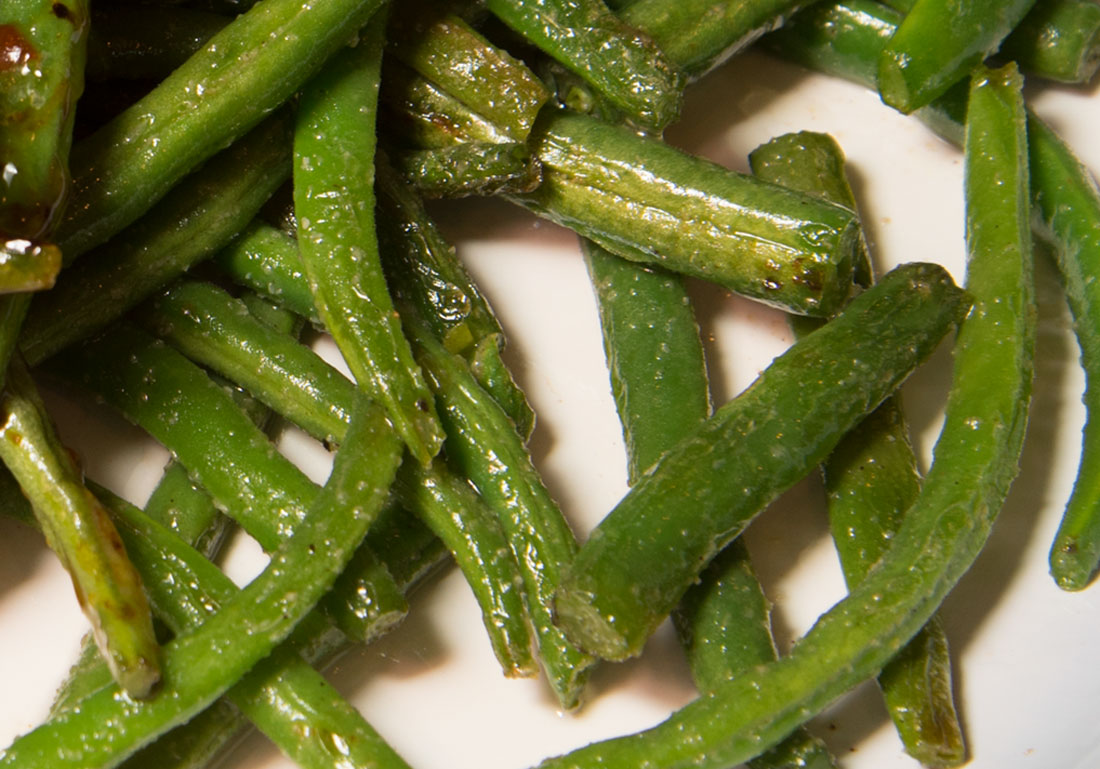
INGREDIENTS
3 cups green beans, ends trimmed and cut in half
1/8 tsp. dried minced garlic, minced or 2 cloves fresh garlic, minced
1 tbsp. vegetable oil, plus oil to deep fry the green beans
½ tsp. salt
1 tbsp. Chinese chili oil
DIRECTIONS
Blanch the green beans in boiling water for about a minute until they turn bright green. Shock them in an ice water bath to cool them down and stop the cooking process. Remove them from the ice water and pat them dry.
Heat a wok over high heat and add enough oil to deep fry the green beans. Drop in a bean to test the temperature of the oil. When it starts to bubble and fry, the oil is hot enough. Fry the beans until they blister and wrinkle on the skin, 1 - 2 minutes. Place them on a rack or a plate lined with paper towels.
Add the 1 tbsp. oil, garlic, chili oil and fried green beans to a hot pan and saute them for 30 seconds. Serve immediately.
Check out these related items

Enough Stuff App
The Enough Stuff inventory app for iOS helps you keep track of how much you have of items so you don't buy more of them than you need.

Green Thumbometer App
The all-in-one iOS app that's a gardening calendar, gardening journal, gardening to-do list and source of gardening information.
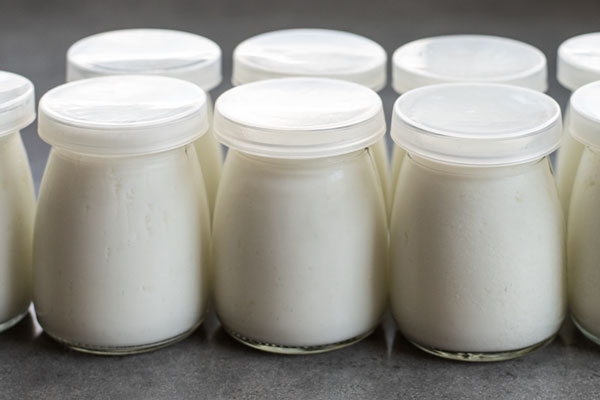
Yearning for Yogurt
Yogurt is one of the oldest and most popular foods and a booming global industry. Here's our recipe for creamy mild yogurt.
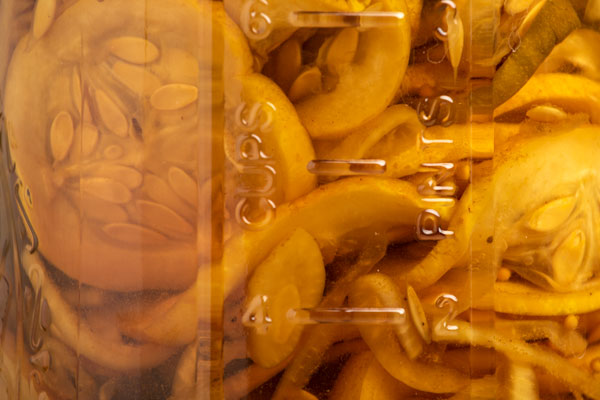
A World of Pickles
Pickling is one of the most common ways of food preservation the world over. See our recipes and information about pickles.
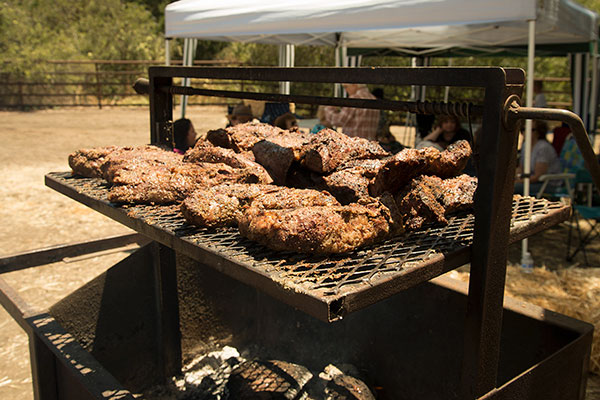
Barbecue Santa Maria Style
Santa Maria's scrumptious grilling is California's premier barbecue style.

Beyond Recipes
Beyond the world of recipe-based cooking is an adventurous, affordable, easy way of cooking that combines the basics with variety.

Creating an Easy Cooking System
Creating a simple, versatile cooking system can enable you to serve delicious meals at home even on days when you are swamped.

Pizza on a Scale of One-to-Ken
If you're lucky enough to live in Portland, try Ken Forkish’s restaurant, Ken's Artisan Pizza. If not, try his great recipes.
